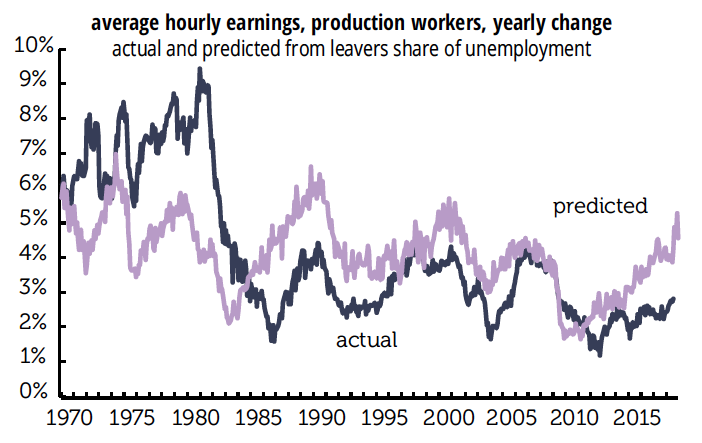Worker confidence can be measured by the quit rate, and it can also be measured by share of job leavers among the unemployed. (This doesn’t rely on a synthetic quit rate series, although we don’t really think that’s an issue in any case.)
Following up on a suggestion from David Rosenberg of Gluskin Sheff, we looked at the relationship between the leavers’ share and the annual growth in average hourly earnings six months later. (We used production workers because the all-worker series only begins in 2007. Where they overlap, they are tightly correlated.) As this graph shows:
wage growth is trending higher, but far less than predicted. Instead of August’s 2.8% annual gain in AHE, the leavers’ regression says it “should” be 4.2%. (By next February, it “should” be up to 5.2%.)
The gap is further evidence that while tighter labor markets are leading to wage pressures, structural changes in the labor market have probably reduced the intensity of those pressures. It appears Alan Greenspan had this one right.




